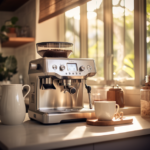Crystal Boba Vs Tapioca Pearls
– Boba tea is a fun drink with chewy balls at the bottom. These balls are called boba and can be made from two different things: tapioca pearls or crystal boba. Tapioca pearls come from a root called tapioca, and they’re squishy but also kind of gummy when you chew them.
Crystal boba is different because it’s made from a plant called konjac, which makes them more jelly-like and clear. They can even get flavors added to them!
Some people like their drinks looking cool, so they choose crystal boba because you can see through it and add colors to it. Both types have their own special tastes that make your drink interesting in its own way.
If you care about eating healthy, crystal boba might be better for you since it has fewer calories than tapioca pearls.
Making your own boba at home is possible too! You just need some basic ingredients and then follow simple recipes to create either type of boba. It’s fun to do, and then you can say “I made my own bubble tea!”.
Now that we know what tapioca pearls and crystal boba are all about, let’s find out why choosing one over the other could make your drink extra special!
Key Takeaways
- Crystal boba is made from konjac plant starch and has a clear, shiny look. Tapioca pearls come from cassava root and are dark and chewy.
- Crystal boba can soak up flavors from drinks, while tapioca pearls have their own sweet taste.
- For health – conscious people, crystal boba is often the better choice because it usually has fewer calories and sugar than tapioca pearls.
- You can make both crystal boba and tapioca pearls at home using simple ingredients like konjac powder for crystal boba or tapioca starch for the pearls.
- Adding either type of boba to your drink makes it more fun by giving you something chewy to enjoy with your favorite iced tea or other cold drinks.
Defining Tapioca Pearls and Crystal Boba
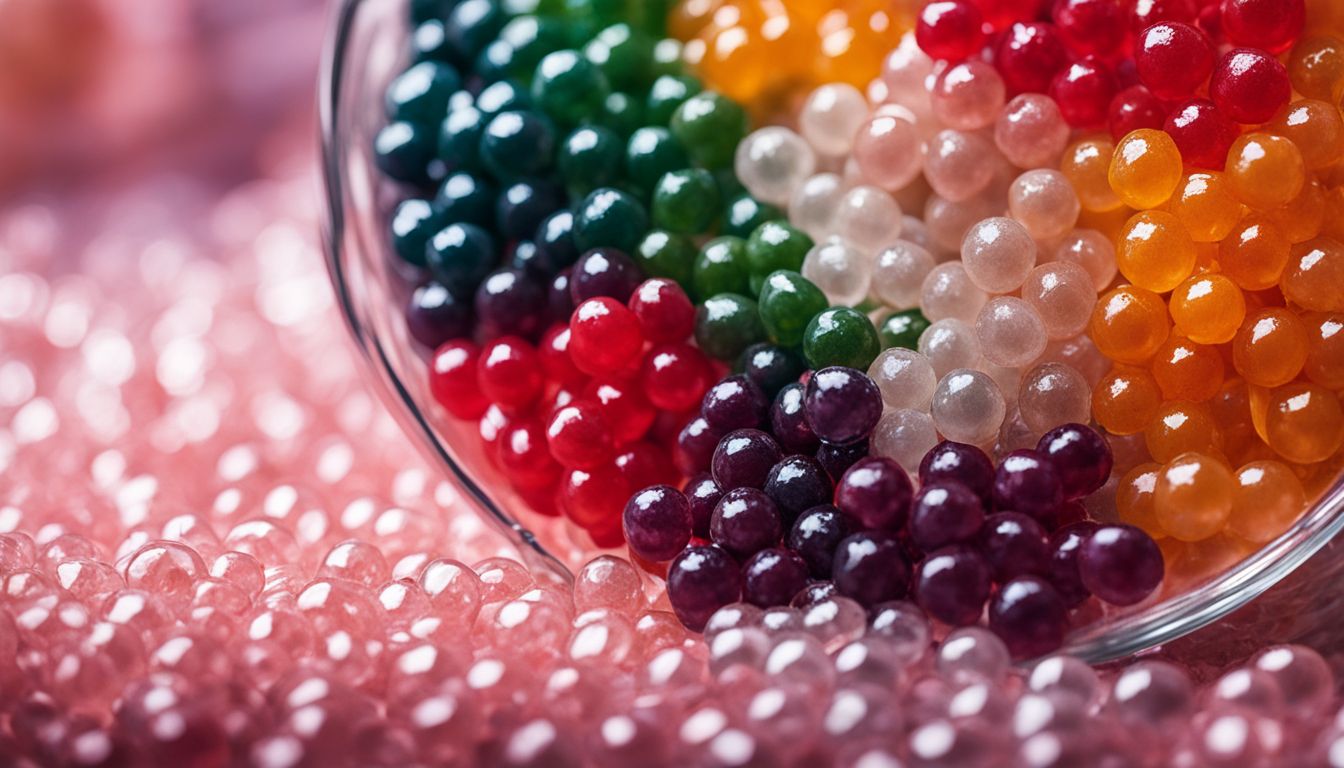
Let’s dive into the world of boba and unpack what sets tapioca pearls apart from their translucent counterparts, crystal boba. Each boasts a unique origin, composition, and sensory appeal that creates a distinct experience for boba enthusiasts to savor.
Origin and Composition
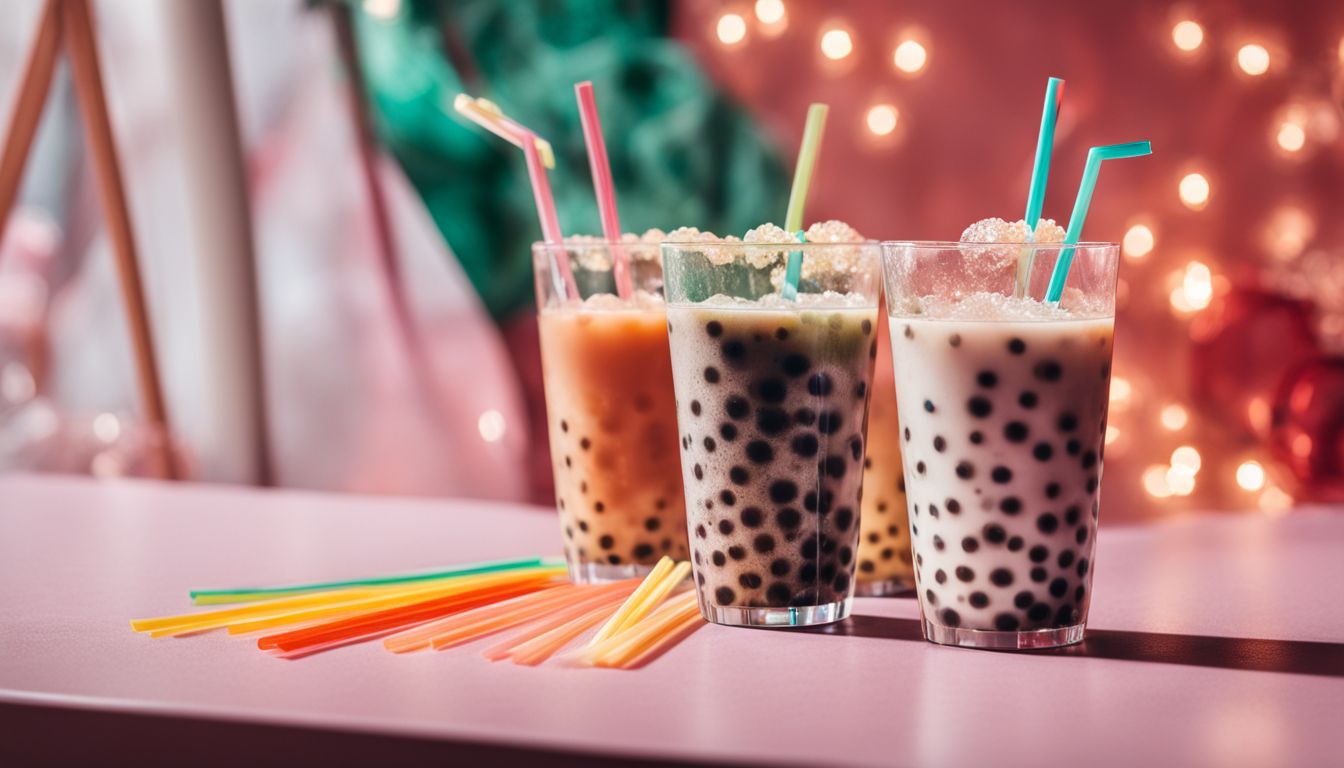
Tapioca pearls come from a plant called cassava root. People turn the cassava root into starch to make these chewy balls. They mix the starch with water and sometimes add sweet things like brown sugar.
Then they shape it into small, round pearls. Because of this, tapioca pearls have a special taste and are often found in boba tea.
Crystal boba is different. It uses starch from another plant called konjac. To make crystal boba, people use gelling agents like seaweed extract. This makes them look clear and shiny, which is why we call them “crystal.” They don’t have much taste on their own, so when you put them in drinks or desserts they soak up the flavors around them.
In your cup of iced tea or dessert bowl, you can see these differences right away. The tapioca balls sink down and look dark against the ice teas or froyo while crystal boba seems to dance light inside your drink because it’s see-through! Both kinds add fun textures to enjoy as you sip or spoon your treat.
Texture and Appearance

Now that we know where boba comes from, let’s talk about how they feel and look. Crystal Boba is like a clear, shiny marble with its see-through, gel-like texture. It feels firm and chewy when you bite into it.
Regular tapioca pearls are different because they’re not clear. They are more like small, dark balls with a soft and squishy feel. When you mix them into your drink, these pearls become even softer.
Both types of boba add fun to sipping your favorite iced teas or drinks because they bring their own special touch. The crystal ones sparkle in the light and give a little extra chewiness to each sip you take!
Tasting the Difference: Crystal Boba vs. Tapioca Pearls
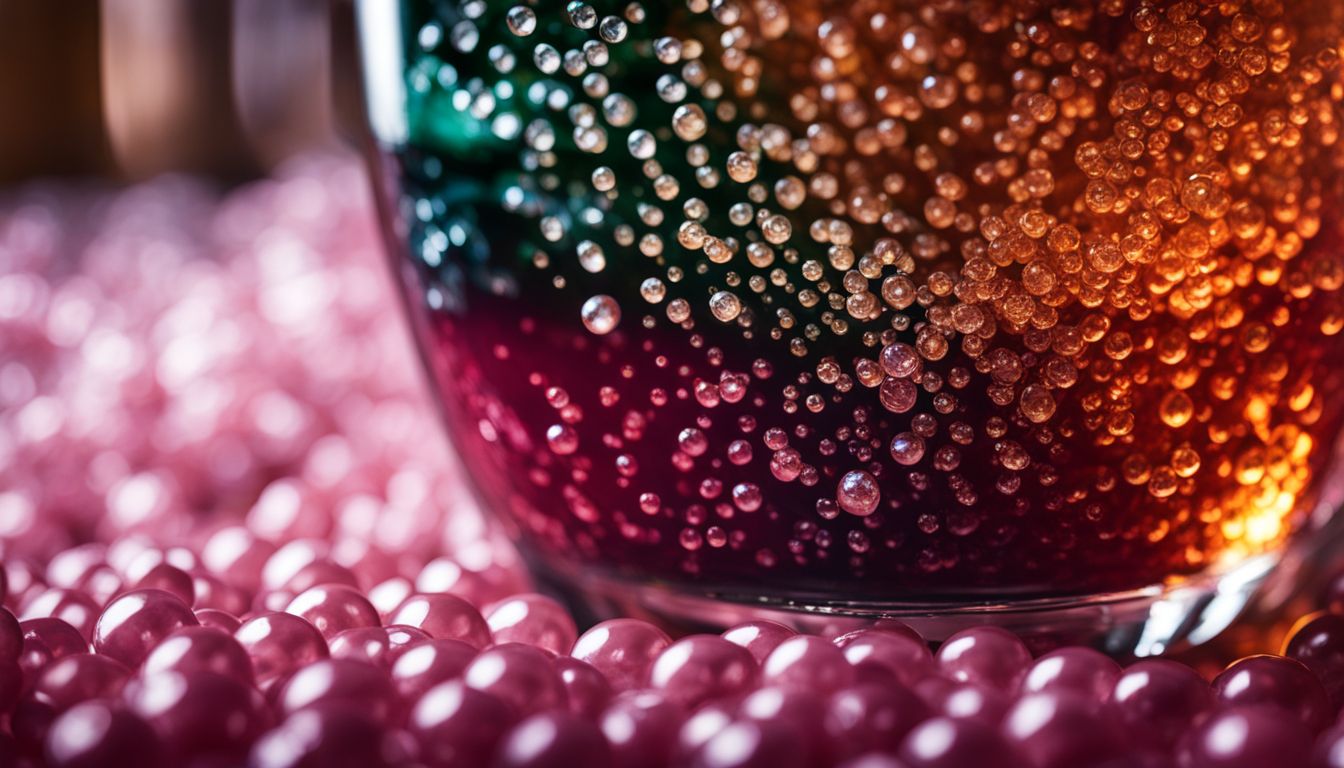
Dive your taste buds into the contrasting worlds of Crystal Boba and Tapioca Pearls, where each bite reveals a distinct journey through texture and flavor. With every sip, discern the subtle nuances that set these chewy sensations apart in your favorite beverage concoctions.
Flavor Profile
 Crystal Boba brings a fun twist to bubble tea
Crystal Boba brings a fun twist to bubble tea
. It is made from the konjac plant, which creates a softer and more chewy texture than regular tapioca pearls. Since Crystal Boba can soak up different flavors, your taste buds might dance with hints of honey or fruitiness depending on what it’s mixed with.
Picture biting into these clear, jelly-like pearls and getting a burst of sweetness in every sip.
Tapioca Pearls have their own special charm. These small balls come from cassava roots and usually carry a subtle caramel taste from brown sugar added during the cooking process. Their chewy texture gives your drink that classic boba feel but with less flavor variety than Crystal Boba.
Enjoying them feels like indulging in a warm, comforting treat.
Now let’s see how both hold up when swimming in your favorite beverage!
Experience in Beverages

Moving from the interesting flavors, let’s talk about how crystal boba and tapioca pearls feel in your drink. Crystal boba brings a jelly-like chewiness to each sip. It makes drinking more fun because it pops in your mouth! Your favorite cold drinks like bubble tea or shaved ice get more exciting with these little jewels.
Tapioca pearls have a different charm. They are soft and squishy after you boil them. People love the way they slide up the straw and give that classic boba feel. Whether you choose crystal boba or regular boba, both add something special to your beverage that makes every gulp a delight.
Health Comparison: Which is the Better Choice?

As we dive into the health aspects of crystal boba versus tapioca pearls, one question stands out: which option aligns better with your wellness goals? This section will weigh in on the nutritional battle between these two boba contenders, scrutinizing their content and how they fit into various dietary regimes.
Nutritional Content

Let’s dive into the nutritional content differences between crystal boba and traditional tapioca pearls. Understanding these can help you make an informed decision about which type of boba to indulge in during your next bubble tea adventure.
| Nutrient | Crystal Boba (per 100g) | Tapioca Pearls (per 100g) |
|---|---|---|
| Calories | 35 | 100-135* |
| Carbohydrates | 9g | 25-30g* |
| Fat | 0g | 0-0.5g* |
| Protein | 0g | 0-0.2g* |
| Fiber | 1g** | 1g** |
| Sugars | 5g* | 5-15g* |
*Values can vary based on cooking method and serving size.
**Dependent on the brand and ingredients used.
Crystal boba, as you can see, boasts a lighter calorie count, making it an appealing option for those mindful of their energy intake. The carb content reflects this too, with almost a third of the carbohydrates found in traditional tapioca pearls. This stark contrast highlights crystal boba as the superior choice for health-conscious boba enthusiasts.
Though both varieties have negligible fat and protein, crystal boba typically contains less sugar, making it a friendlier addition to your boba drink without sacrificing sweetness.
Dietary fibers are comparable, suggesting neither has a significant advantage in terms of digestion. However, it’s crucial to take note of the ingredients in the brand you choose as this can alter the fiber content.
The table paints a clear picture: crystal boba offers a lighter, diet-friendly option for those looking to enjoy bubble tea without straying too far from their wellness goals.
Dietary Considerations
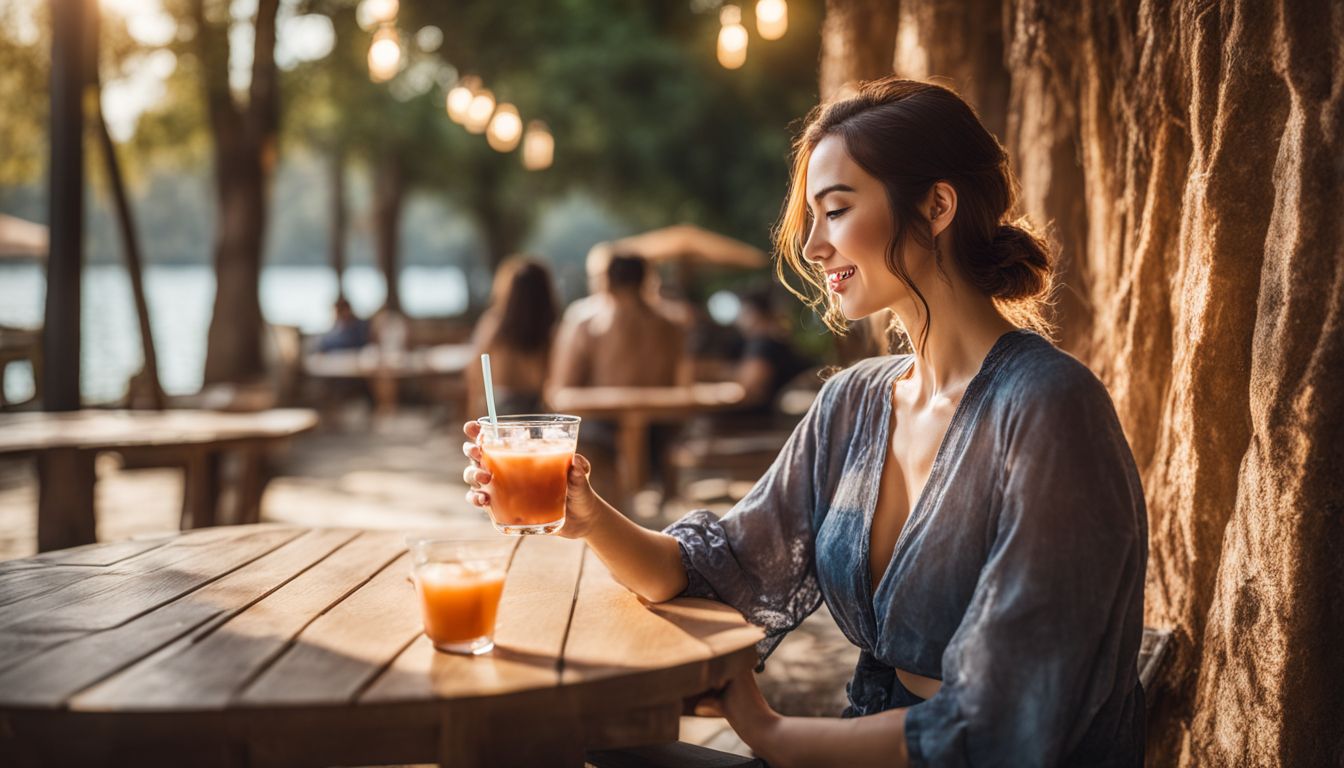
Now that we’ve looked at the nutritional content, let’s consider how boba fits into your diet. If you’re watching what you eat, crystal boba might be a better pick. It has fewer calories and carbs than regular tapioca pearls.
This means it can be a smarter choice if you’re trying to cut down on sugar and starch.
People who care about their health often choose crystal boba because it is lower in fat too. Keeping an eye on these details can help if you want to enjoy boba without taking in too many calories.
Remember that even though crystal boba is lighter, enjoying it in moderation is key to staying healthy while still having fun with your drinks!
Crystal Boba Nutrition Facts
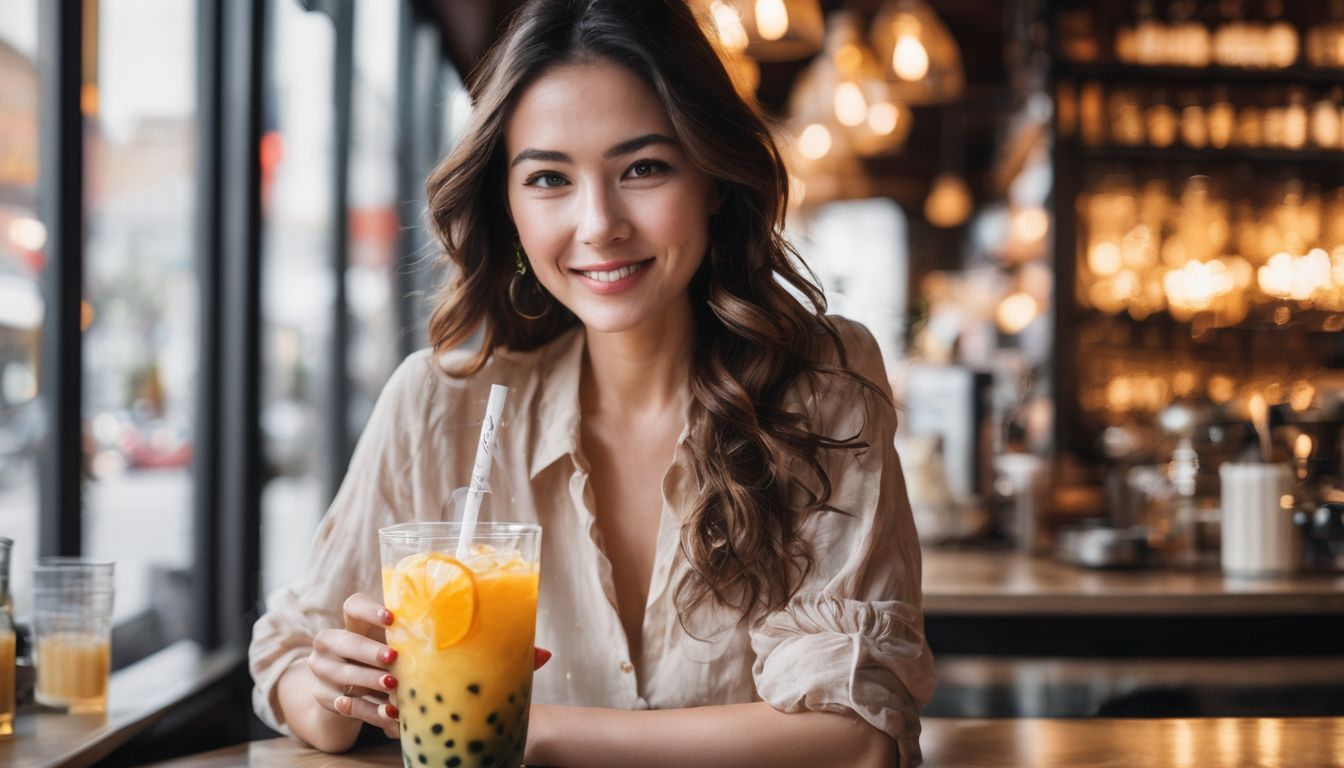
If you’re keen on understanding what fuels your boba fascination, especially when it comes to the lighter, airy crystal boba, let’s shed some light on its nutrition facts. Crystal boba, known for its translucent appearance, offers more than just an aesthetic twist to your favorite drink. Here’s a glimpse into the nutritional profile of 100 grams of crystal boba:
| Nutritional Component | Quantity |
|---|---|
| Calories | 70 |
| Carbohydrates | 17 g |
| Sugars | 0 g |
| Fiber | 1 g |
| Fat | 0 g |
| Protein | 0 g |
| Sodium | 5 mg |
This table provides a quick peek at what you’re indulging in with crystal boba. With its lower calorie and carbohydrate content, crystal boba stands out as a guilt-free option for those watching their intake. The konjac plant base contributes to the unique texture and subtle taste, distinguishing it from its more traditional tapioca counterpart. Enjoy your boba with a side of knowledge, reveling in the lighter choice that crystal boba presents. Cheers to a healthier twist on a beloved treat!
Making Your Own Boba at Home
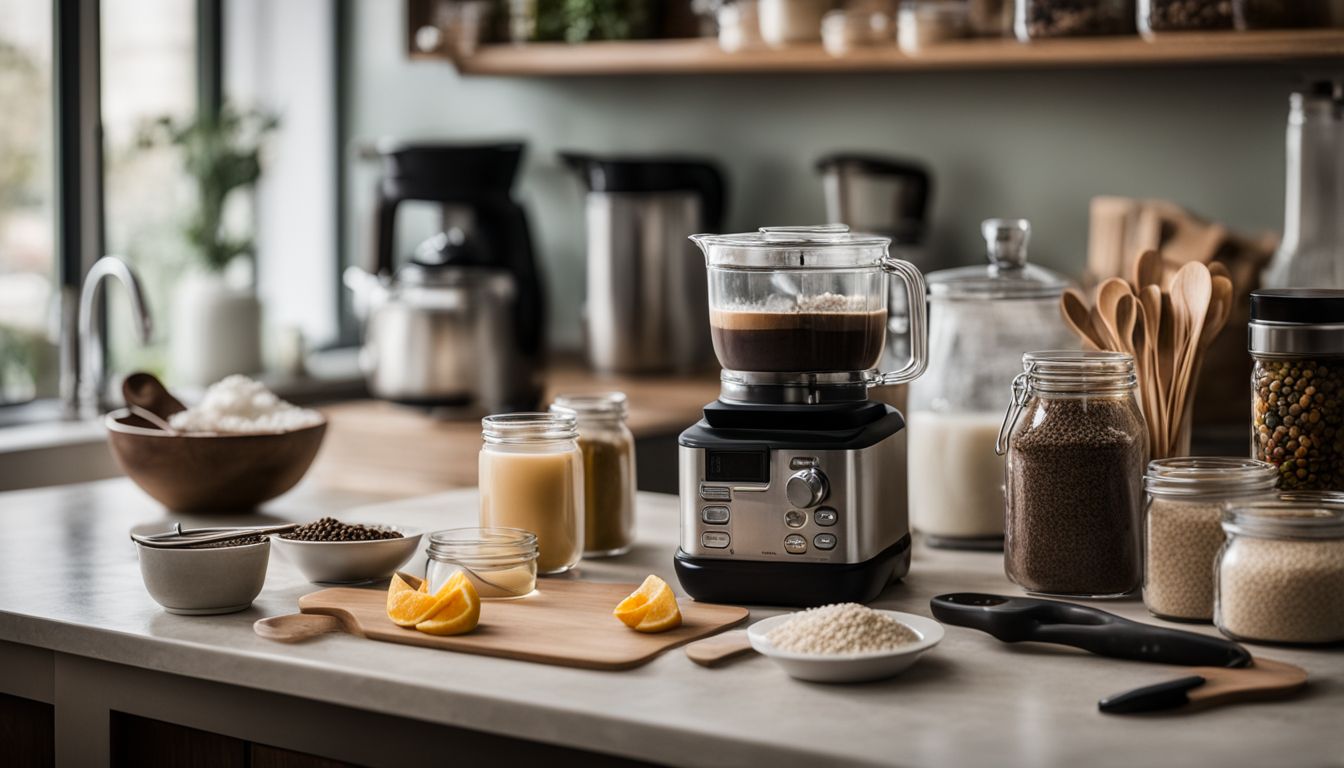
For those who wish to bring the boba experience into their own kitchens, crafting homemade crystal and tapioca pearls can be a delightful endeavor. Dive into simple recipes that will guide you through the process of transforming basic ingredients into these chewy spheres of joy, perfect for adding a personal touch to your favorite beverages.
Simple Recipes for Crystal and Tapioca Boba
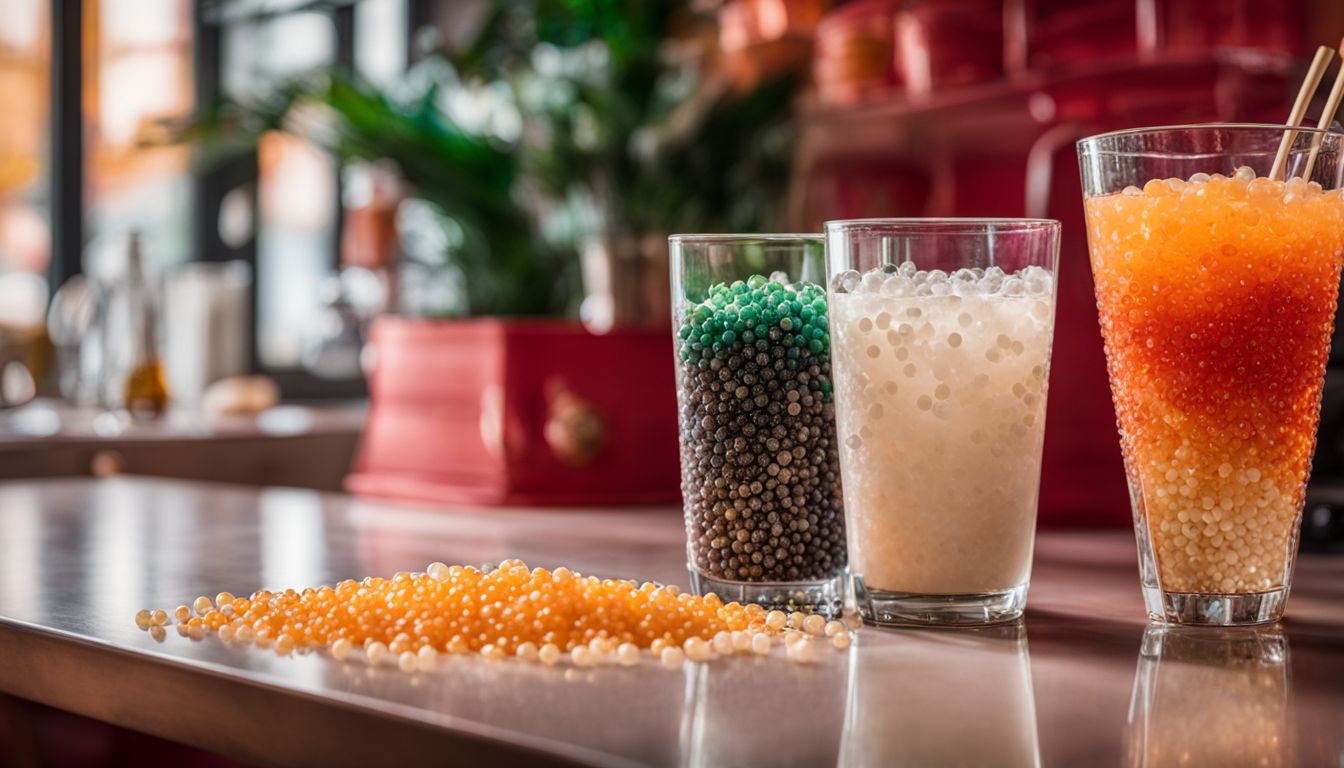
Making boba at home can be fun and easy. Here’s how you can create your own crystal and tapioca pearls for a delicious treat.
- Start with 2 cups of water in a pot and bring it to a boil.
- Stir in 1 cup of konjac powder until it’s fully mixed.
- Add flavor by mixing in your choice of juice or syrup.
- Pour the mixture into molds or drop small amounts using a dropper to create pearl shapes.
- Let the pearls set in the fridge for about an hour until they’re firm.
- Enjoy your homemade crystal boba by adding them to your favorite drink.
- Mix 1 cup of tapioca starch with 2 tablespoons of hot water in a bowl.
- Knead the mixture well until it forms a dough – like consistency.
- Roll out the dough and cut it into small pieces, then roll each piece into a ball shape for pearls.
- Boil these balls in water for about 20 – 30 minutes, or until they float to the top and look clear.
- Rinse the cooked pearls under cold water to stop them from sticking together.
- Sweeten your tapioca pearls by soaking them in sugar syrup for extra taste.
Conclusion
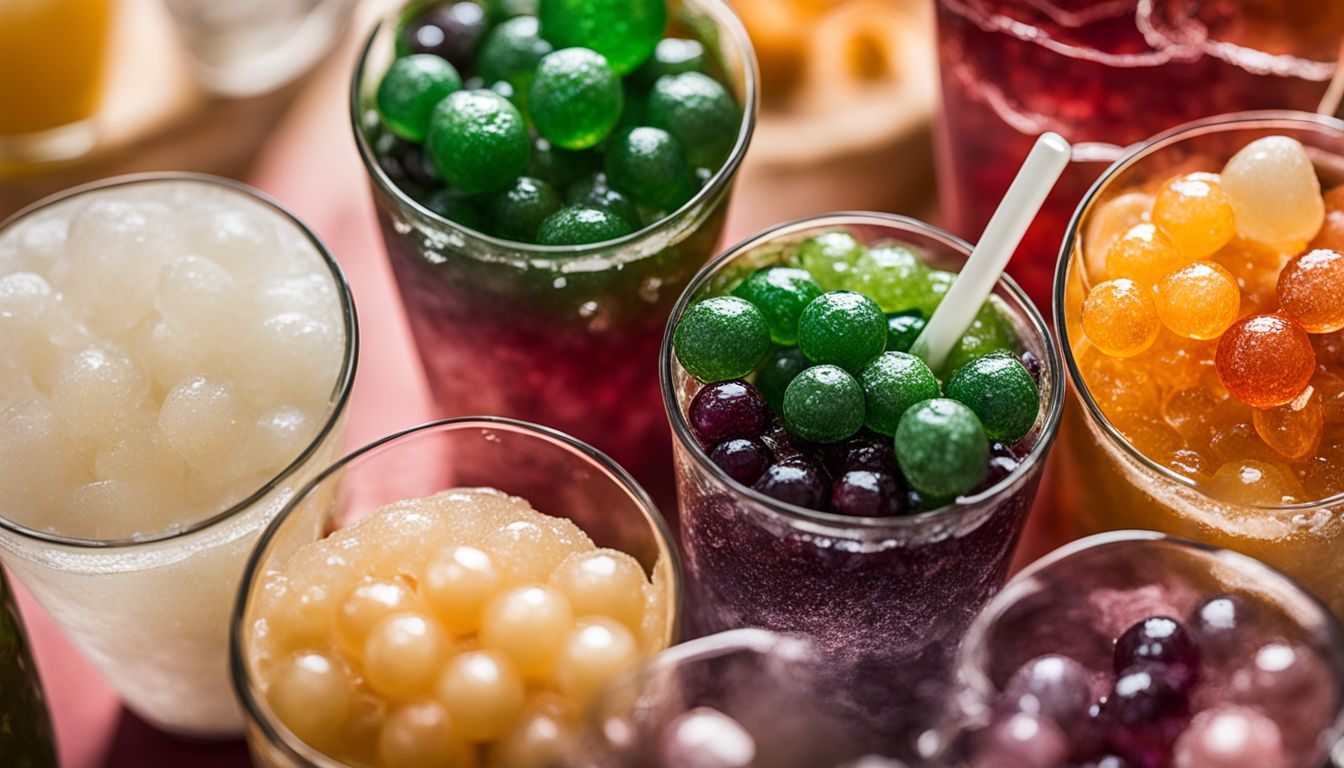
Remember, both crystal boba and tapioca pearls make your drinks fun. Crystal boba is softer and can have many tastes. Tapioca pearls are chewy and come from the tapioca root. If you want something healthy, try crystal boba with konjac.
You can make these at home too! Enjoy finding your favorite kind of boba for your next drink.
Discover the detailed nutritional breakdown of crystal boba by checking out our comprehensive crystal boba nutrition facts.
FAQs
1. What is the main difference between crystal boba and tapioca pearls?
Crystal boba, also known as popping pearls or bursting boba, is clear and pops in your mouth. Tapioca pearls, sometimes called pearl tapioca or zhen zhu, are chewy and made from tapioca flour.
2. What makes tapioca pearls thick?
Tapioca flour comes from a plant named manihot esculenta or yuca. This acts as a thickening agent when cooked to make the gelatinous texture of the tapioca pearls.
3. Are crystal bobas made with the same ingredients as tapioca pearls?
No! Crystal bobas use different stuff like water, sugar, and agar-agar—a jelly-like substance through a cool method called reverse spherification to create their unique look.
4. Can you describe what crystal bobas taste like compared to regular tapioca pearls?
Crystal boba tends to be more about fun textures since it bursts with liquid flavor. Regular tapioca has a mild taste but gives that signature gummy feel which people love in bubble tea!
5. Where do both types of Boba come from originally?
The yummy chewy tapioca pearls were first used in bubble teas in Taiwan; on the other hand, crystal bobas have become popular worldwide for adding an exciting pop to drinks and desserts!
Was this helpful?

I’m Mary R. Q. , a seasoned professional chef dedicated to elevating home cooking experiences. Through my expertise in the culinary arts, I provide practical cooking tips and insightful reviews of kitchen utensils on my blog, milkwoodrestaurant.com. As a passionate advocate for transforming everyday meals into extraordinary culinary adventures, I aim to empower home cooks with the knowledge and tools they need to create delicious and memorable dishes. I’m also an author of the book “1,001 Kitchen Tips & Tricks: Helpful Hints for Cooking, Baking, and Cleaning (1,001 Tips & Tricks)” which is sold on Amazon. Join me on a flavorful journey as we explore the art of cooking and the essential tools that make it a joy.

